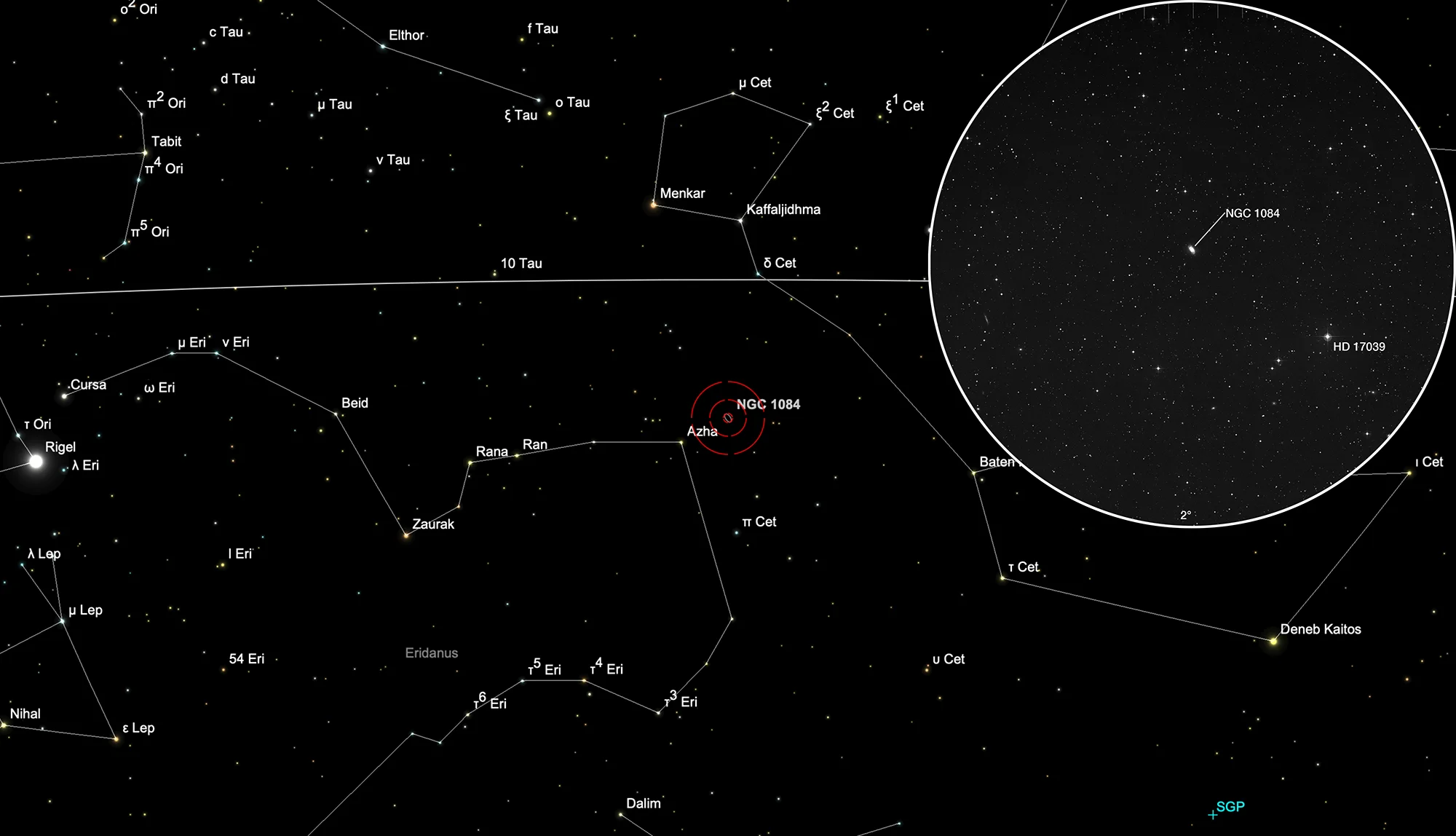Galaxy NGC 1084
History
On 10 January 1785 William Herschel discovered a «bright nebula» which he added as object I 64 (NGC 1084) to his «Catalogue of One Thousand new Nebulae and Clusters of Stars» with the notes: «Very bright, pretty large, little extended, much brighter in the middle.» [463]
Physical Properties
| Designation | NGC 1084 |
| Type | Gx (Sc) |
| Right Ascension (J2000.0) | 02h 45m 59.8s |
| Declination (J2000.0) | -07° 34' 40" |
| Diameter | 2.8 × 1.4 arcmin |
| Photographic (blue) magnitude | 11.3 mag |
| Visual magnitude | 10.7 mag |
| Surface brightness | 12.5 mag·arcmin-2 |
| Position Angle | 30° |
| Redshift (z) | 0.004693 |
| Distance derived from z | 19.82 Mpc |
| Metric Distance | 21.230 Mpc |
| Dreyer Description | vB, pL, E, gpmbM |
| Identification, Remarks | WH I 64; h 264; GC 604; MCG -1-8-7; IRAS 02435-0747; KUG 0243-077 |
Finder Chart
The galaxy NGC 1084 is located in the constellation Eridanus. On 7 November it is in opposition to the Sun and cross the meridian at local midnight. Visible from your location in the months: July to April.
